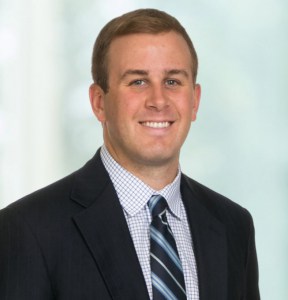To make Wealthtender free for readers, we earn money from advertisers, including financial professionals and firms that pay to be featured. This creates a conflict of interest when we favor their promotion over others. Read our editorial policy and terms of service to learn more. Wealthtender is not a client of these financial services providers.
➡️ Find a Local Advisor | 🎯 Find a Specialist Advisor

On October 6, 2021, the Department of Education announced significant temporary changes for individuals seeking Public Service Loan Forgiveness (PSLF). The PSLF waiver, which expires on October 31, 2022, allows student loan payments to qualify for PSLF that hadn’t previously.
Qualifying for PSLF has stringent requirements that have caused many to delay or even miss out on PSLF altogether. This temporary waiver allows your past mistakes to be rectified on your PSLF journey. It would be best if you acted very soon as the deadline is quickly approaching.
Public Service Loan Forgiveness Limited Waiver
The Biden administration enacted temporary changes to PSLF through the HEROES Act of 2003. This act allows President Biden to modify rules for student loans during a national emergency such as the COVID-19 pandemic.
This limited waiver applies to all federal loans, repayment plans, and some types of deferment and forbearance. Borrowers who have already paid off their loans or refinanced with a private company will not be eligible.
You may receive a refund if you follow the steps below and have achieved 120 months of qualifying payment credits. If you’re pursuing PSLF, you must read this piece.
PSLF Requirements
Below is the list of requirements to qualify for PSLF. Keep in mind that some of these have changed for the better during the limited waiver.
- You must work for a qualifying employer. Employers typically include government entities, nonprofit organizations, and 501(c) employees.
- You must be a full-time employee of this entity based on the employer’s definition of full-time employment. Being an independent contractor of these entities doesn’t count. If you’re working for multiple qualifying employers part-time, you must combine at least 30 hours between the two entities.
- You must have Direct loans issued by the Federal government. Through the PSLF temporary waiver, this requirement is not active. You can determine your loan type by reviewing your loan list at https://studentaid.gov/.
- You must make payments with a qualifying income-driven repayment plan (IDR). The standard 10-year plan also qualifies. However, the standard 10-year plan isn’t suitable for PSLF because you’re paying off the entire balance within ten years. The qualifying repayment plan types are:
- Income Contingent Repayment Plan (ICR)
- Income-Based Repayment (IBR)
- Pay As You Earn (PAYE)
- Revised Pay As You Earn (REPAYE)
- You must make 120 qualifying payments with all of the above criteria.
PSLF Temporary Waiver Differences
Under the PSLF Waiver, your loan type and repayment plan (numbers three and four) will not keep you from earning PSLF credit. However, you must continue to have a qualifying employer, work full time or 30 aggregate hours part-time with two qualifying employers, and have 120 total payments regardless of the temporary waiver.
If you weren’t aware of the strict requirements, you now have a second chance to certify any payments made. You can revisit past payments and receive credit for past payments made either with the incorrect loan type (number 3) or not being on an IDR plan (number 4).
Now is your chance to go back and get credit for those payments until October 31 of 2022. After that date, the rules revert to the prior criteria.
Let’s dive into what you must do to receive credit for your past payments.
Loan Consolidation
The first step to consider is consolidating your loans that don’t ordinarily qualify. The loans you should consider for consolidation include FFEL loans, Perkins loans, and other non-direct federal student loans. These loans must originate as or consolidate into direct loans from the federal government.
If you made payments with FFEL loans, Perkins loans, or other federal student loans, you could receive credit towards PSLF. The payments will count while employed by a 501(c)3 or government employer.
Before consolidating your loans, you must ensure that you’re consolidating to a Direct Consolidation Loan and not refinancing to a private loan. In addition, you must verify that you have a qualifying employer.
Consolidating those loans may not be necessary if you currently have direct loans. It’s also essential to ensure that you are on track towards PSLF because loan consolidation typically triggers interest capitalization on those consolidated loans. Capitalization of interest can be detrimental to your repayment plan if you’re not on track for PSLF.
Prior Payments Made
All payments made before 10/31/2022 count towards PSLF. Previously, your payments didn’t count if you were making payments towards student loans and they weren’t in the right repayment plan or the right loan type.
You can now have those payments count by submitting an employment certification and direct consolidation by October 31, 2022, but ideally as soon as possible. First, you’d consolidate your FFEL loans. Next, you’d submit a letter certifying your employer.
The Right Type of Employer for PSLF
There are no changes to this requirement. Your employer must fall within one of the following categories to receive PSLF.
- A 501(c)3 nonprofit organization such as a hospital, school, university, etc.
- A Federal, state, or local government agency
- Americorp or Peace Corps
- Full-time employment: You must meet your employer’s definition of full-time. If they don’t have a definition of full-time, then 30 hours per week at one employer or 30 hours per week combined with two qualifying employers part-time. 1099 contract work doesn’t count.
Case Study Number 1 – All Direct Loans and on IBR
If you currently have all direct loans and are on an income-based repayment plan, then you already meet all of the criteria for PSLF. You must continue to submit employment certification and check the number of months counted towards PSLF.
If you have documented months for PSLF payments, you should receive an automatic review for past eligible payments. Therefore, you could have even more months counted towards PSLF during the temporary waiver.
For example, if you had FFEL loans or were in the wrong type of repayment plan, then you should receive retroactive credit for those payments. You must check this for accuracy.
Case Study Number 2 – All Direct Loans, Incorrect Repayment Plan
If you have all direct loans but you’re not on a qualifying repayment plan, you’ll still receive credit towards your payments. It would be best if you enrolled in an income-driven repayment plan after 10/31/2022 (plus any extensions to this deadline).
In addition to enrolling in the correct repayment plan, you must submit your employment certification form and confirm that qualifying payments are added to your tally.
Case Study Number 3 – All FFEL Loans
If you have all FFEL, then you must complete a direct consolidation before 10/31/2022 (plus any extensions) to receive prior credit towards PSLF. Once you’ve completed your direct consolidation, you will submit your employment certification.
You should complete these steps as soon as possible.
Once you’ve completed the above steps, you must enroll in an income-driven repayment plan such as IBR, PAYE, REPAYE, or ICR after 10/31/2022 to receive credit for payments.
If you already have 120 qualifying payments while working at a qualifying employer with FFEL loans, then you’ll automatically receive tax-free forgiveness after completing a direct consolidation!
It’s critical that you remember the risks of direct consolidation and change employers or stop working for a qualifying employer—more on this below.
Case Study Number 4 – Mix of FFEL & Direct Loans
If you have a mix of FFEL and direct loans, you must complete a direct consolidation of your FFEL loans by 10/31/2022 (plus extensions). After completing your consolidation, submit your employment certification for those loans. Any credit should automatically update.
Documentation with Loan Servicers
When consolidating your loans, ensure your contact information is current with your loan servicer and studentaid.gov. To maintain adequate records, you should download your complete transaction history from your loan servicer(s). In addition, download all correspondence.
Downloading these interactions with your servicer will allow you and your student loan financial planner to check that all payments are accounted for post-consolidation. Unfortunately, it’s very common for loan servicers to make a mistake or give incorrect information.
Who is Not a Good Fit?
Consolidating your FFEL loans may not be a good fit if you’re planning to leave a qualifying employer. Consolidating your loans could handcuff you to your employer because it restarts the clock towards taxable loan forgiveness (not PSLF).
If you have multiple years to go before reaching 120 payments and your income has risen higher than your debt, consolidating may also hurt you. In this scenario, you lose the ability to cap your payments at the 10-year standard plan level calculated when your income was lower. This scenario applies to residents that entered into an income-driven repayment plan a few years ago that are now attendings with a much higher income.
Consolidating your FFEL loans triggers the capitalization of interest. Capitalization of interest means that your accrued interest to that point is added to the principal balance. Therefore, you’ll accrue interest on dollars that you previously weren’t.
Help Navigating PSLF
If you follow the steps outlined in this article and have patience, you should remove years from your repayment plan or even see immediate forgiveness.
If you want help, Arch Financial Planning, LLC can help you maximize the PSLF waiver.
This article was originally published here and is republished on Wealthtender with permission.

About the Author
Cecil Staton
Cecil Staton, CFP® CSLP® is the founder of Arch Financial Planning, LLC – a fee-only financial planning and investment management firm that specializes in early career dentists & physicians with student loans.
To make Wealthtender free for readers, we earn money from advertisers, including financial professionals and firms that pay to be featured. This creates a conflict of interest when we favor their promotion over others. Read our editorial policy and terms of service to learn more. Wealthtender is not a client of these financial services providers.
➡️ Find a Local Advisor | 🎯 Find a Specialist Advisor

